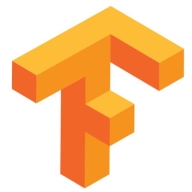

DataRobot and TensorFlow are competing in the AI and machine learning space, each targeting different needs. DataRobot offers an edge in ease of use and rapid deployment, while TensorFlow provides robust features and scalability for technical experts seeking advanced customization.
Features:DataRobot features automated model building, user-friendly operation without requiring extensive programming skills, and strong predictive analytics. TensorFlow provides a flexible framework, broad applicability for deep learning tasks, and scalability for handling large datasets and complex models.
Room for Improvement:DataRobot could enhance its features for comprehensive data processing, expand its customization options, and improve open-source integration. TensorFlow might focus on simplifying its deployment process for non-technical users, enhancing its user interface, and improving efficiency in training on smaller datasets.
Ease of Deployment and Customer Service:DataRobot facilitates a quick deployment process with extensive support appealing to non-technical users. TensorFlow requires more technical expertise for deployment but offers abundant community resources and detailed documentation.
Pricing and ROI:DataRobot generally has higher initial setup costs but offers rapid ROI through its automated features and predictive tools. TensorFlow, being open-source, has low initial costs, shifting ROI focus to the development expertise required. It remains cost-effective for those investing in technical resources for custom model development.


DataRobot captures the knowledge, experience and best practices of the world’s leading data scientists, delivering unmatched levels of automation and ease-of-use for machine learning initiatives. DataRobot enables users to build and deploy highly accurate machine learning models in a fraction of the time.
TensorFlow is an open source software library for high performance numerical computation. Its flexible architecture allows easy deployment of computation across a variety of platforms (CPUs, GPUs, TPUs), and from desktops to clusters of servers to mobile and edge devices. Originally developed by researchers and engineers from the Google Brain team within Google’s AI organization, it comes with strong support for machine learning and deep learning and the flexible numerical computation core is used across many other scientific domains.
We monitor all AI Development Platforms reviews to prevent fraudulent reviews and keep review quality high. We do not post reviews by company employees or direct competitors. We validate each review for authenticity via cross-reference with LinkedIn, and personal follow-up with the reviewer when necessary.